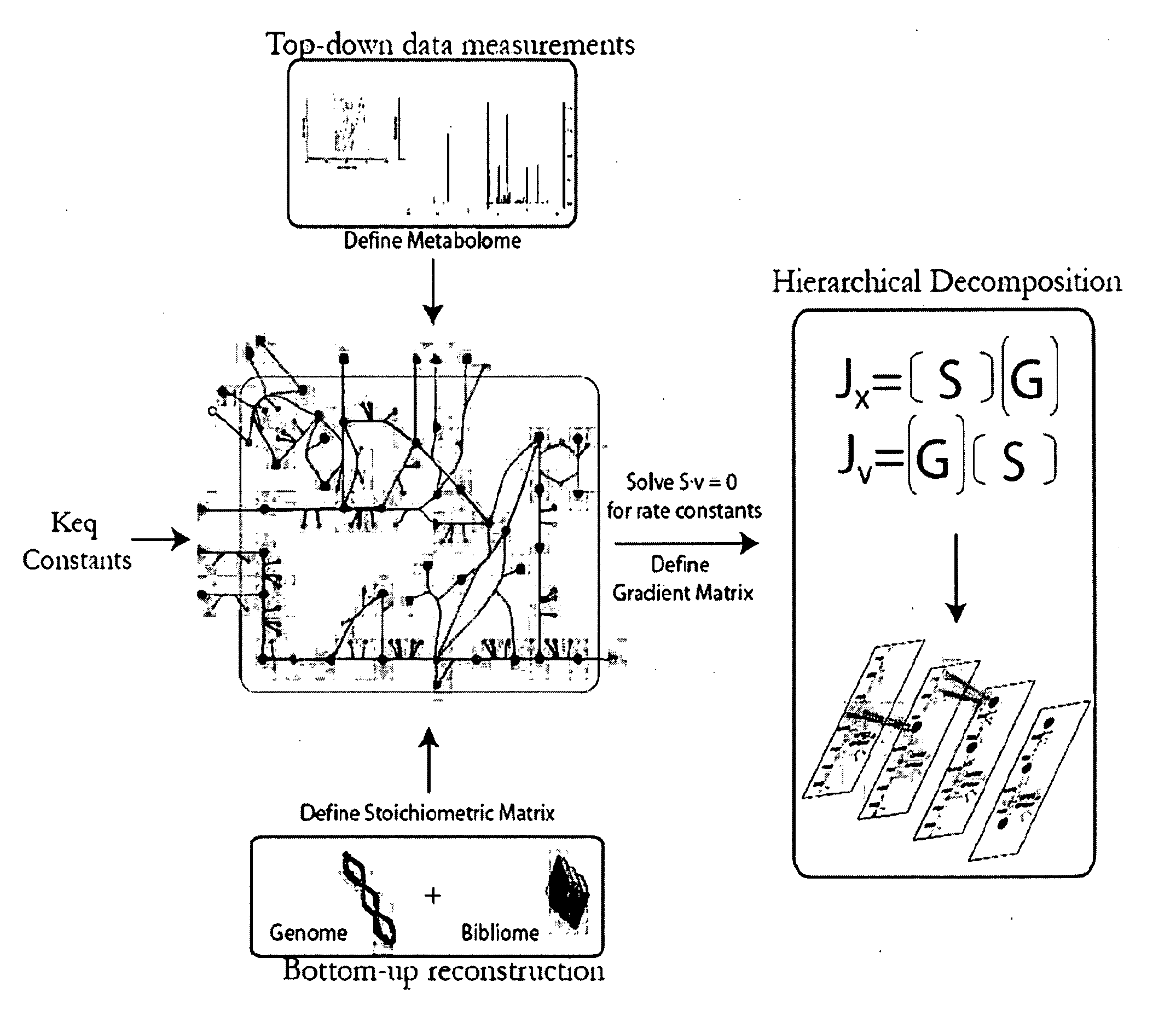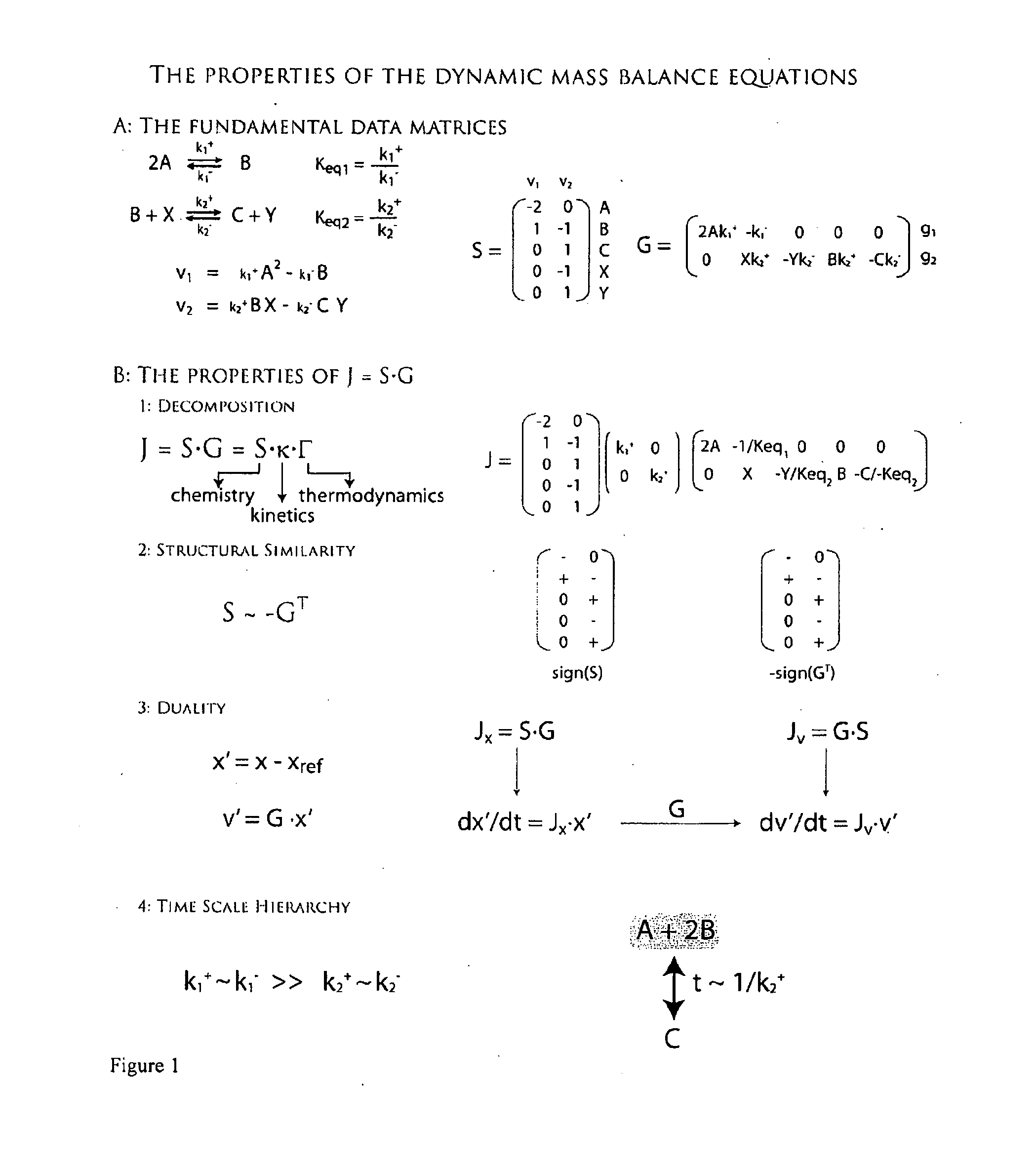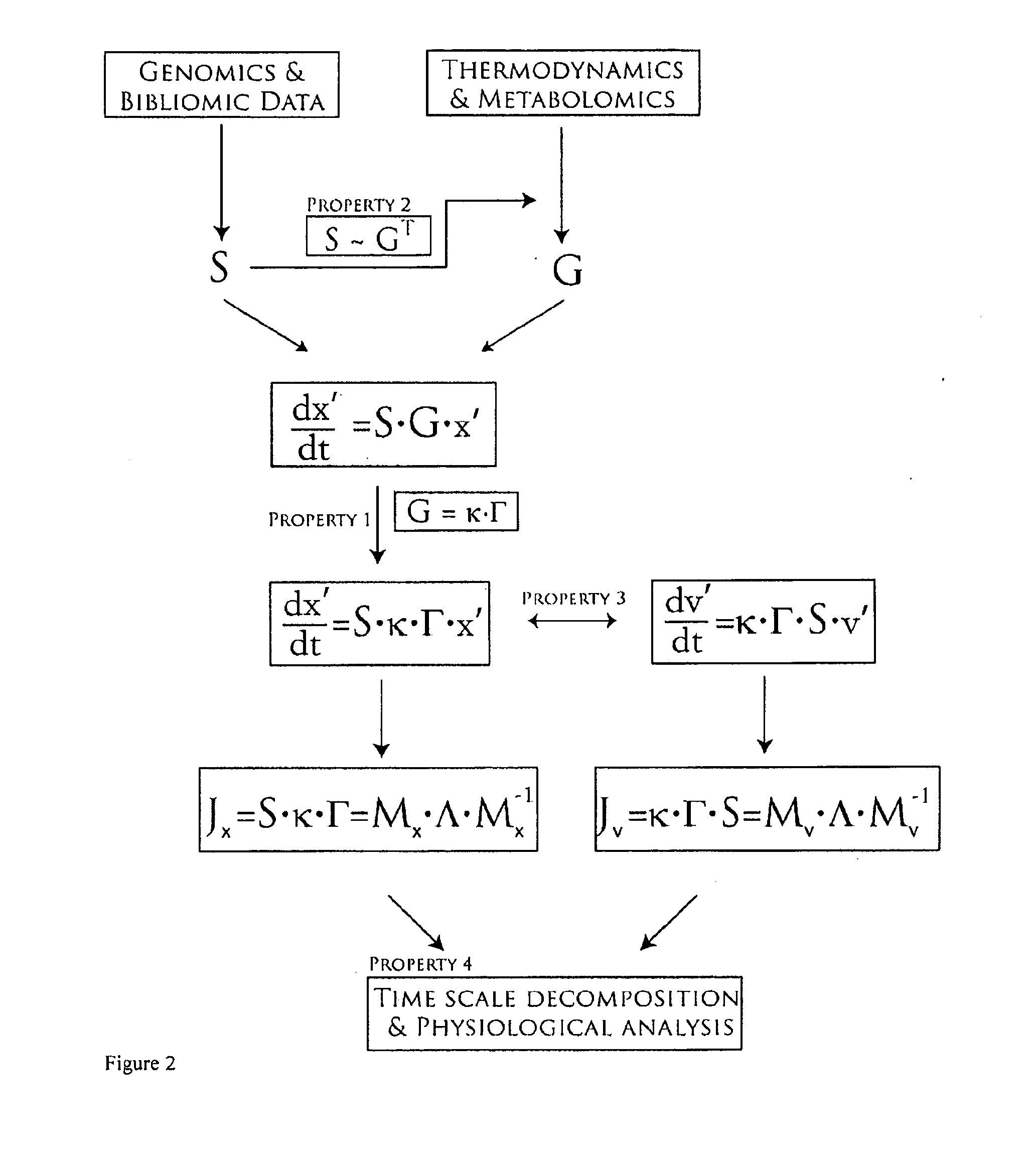Methods and systems for genome-scale kinetic modeling
- Summary
- Abstract
- Description
- Claims
- Application Information
AI Technical Summary
Benefits of technology
Problems solved by technology
Method used
Image
Examples
example 1
A Stoichiometric Model of Glycolysis in Homo sapiens
[0202]The stoichiometric matrix as described in this invention was constructed for the glycolytic pathway in Homo sapiens.
TABLE 1The stoichiometric matrix for the glycolytic pathway, the columnscorrespond to metabolites and columns correspond to fluxes.HKPGIPFKALDTPIGAPDHPGKPGMENPKLDHLEXATPaseG6P1−100000000000F6P01−10000000000FDP001−1000000000DHAP0001−100000000GAP00011−10000000DPG13000001−1000000PG30000001−100000PG200000001−10000PEP000000001−1000PYR0000000001−100LAC00000000001−10ATP−10−1000100100−1
example 2
The Gradient Matrix of Glycolysis in Homo sapiens
[0203]A model of glycolysis was constructed by the methods described in this invention. Fluxes and concentrations for a normal human red blood cell are listed in Table 2. Table 2 also includes equilibrium constants for the reactions in the network. Reactions with equilibrium constants much greater than 1 or much less than one are effectively irreversible. The gradient matrix can be factored into the kappa and gamma matrices as described in this invention and illustrated for the glycolytic pathway in Homo sapiens.
TABLE 2The steady state concentrations of metabolites (mM: millimolar).Concentrations (mM)G6P0.066440083F6P0.027233463FDP0.013861036DHAP0.147408623GAP0.006698582DPG130.000228927PG30.083927674PG20.012267539PEP0.020874113PYR0.06LAC1.397092049ATP2.401613356
TABLE 3The steady state fluxes and the equilibrium constantsfor the reactions in the glycolytic network (mM: millimolar,hr: hour, Keq: equilibrium constant).Flux (mM / hr)KeqHK0...
example 3
The Dynamic Glycolytic Pathway in Homo sapiens
[0209]Using the stoichiometric matrix in Example 1 and the gradient matrix in Example 2, a dynamic model of the glycolytic pathway was constructed by calculating the concentration Jacobian matrix by post-multiplication of the stoichiometric matrix by the gradient matrix (Table 7) and the flux Jacobian matrix by pre-multiplication of the stoichiometric matrix by the gradient matrix (Table 8), as per the methods described above.
TABLE 7The concentration Jacobian matrix for the glycolytic pathway inHomo sapiens. Row and column headings are labeled for clarity.G6PF6PFDPDHAPGAPDPG13G6P−29304.971475.360000F6P29304.9−71493.650.003721000FDP018.29651−36.156660.0196160.431670DHAP0036.15294−16.52621288.43370GAP0036.1529416.48698−438.05540.94482DPG130000148.7583−2009588PG3000002009588PG2000000PEP000000PYR00000−39.25606LAC0000039.25606ATP0.000101−18.296510.003721002009588PG3PG2PEPPYRLACATPG6P000000.207471F6P00000−0.207582FDP000000.207582DHAP000000GAP...
PUM
 Login to View More
Login to View More Abstract
Description
Claims
Application Information
 Login to View More
Login to View More - R&D
- Intellectual Property
- Life Sciences
- Materials
- Tech Scout
- Unparalleled Data Quality
- Higher Quality Content
- 60% Fewer Hallucinations
Browse by: Latest US Patents, China's latest patents, Technical Efficacy Thesaurus, Application Domain, Technology Topic, Popular Technical Reports.
© 2025 PatSnap. All rights reserved.Legal|Privacy policy|Modern Slavery Act Transparency Statement|Sitemap|About US| Contact US: help@patsnap.com



